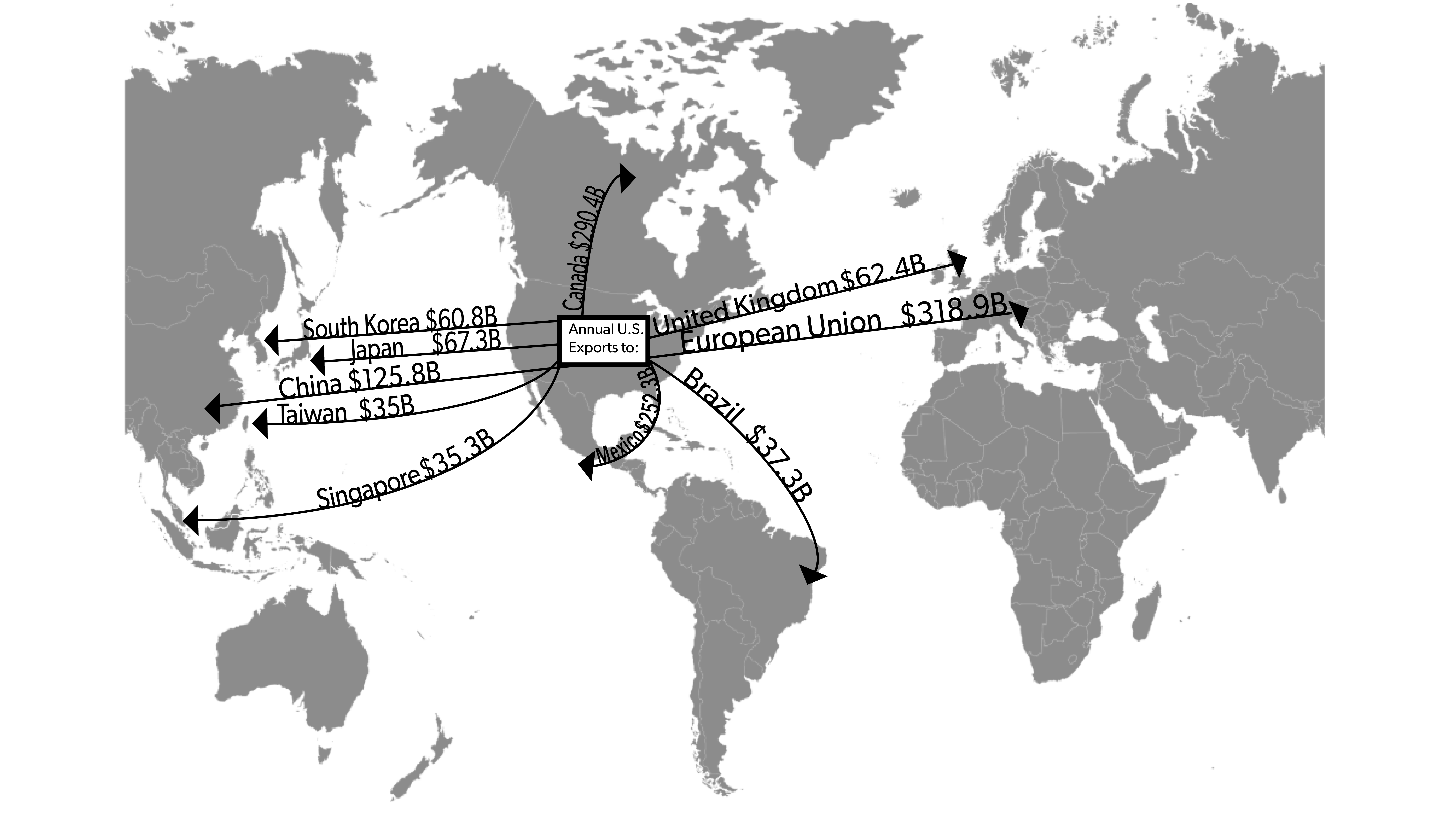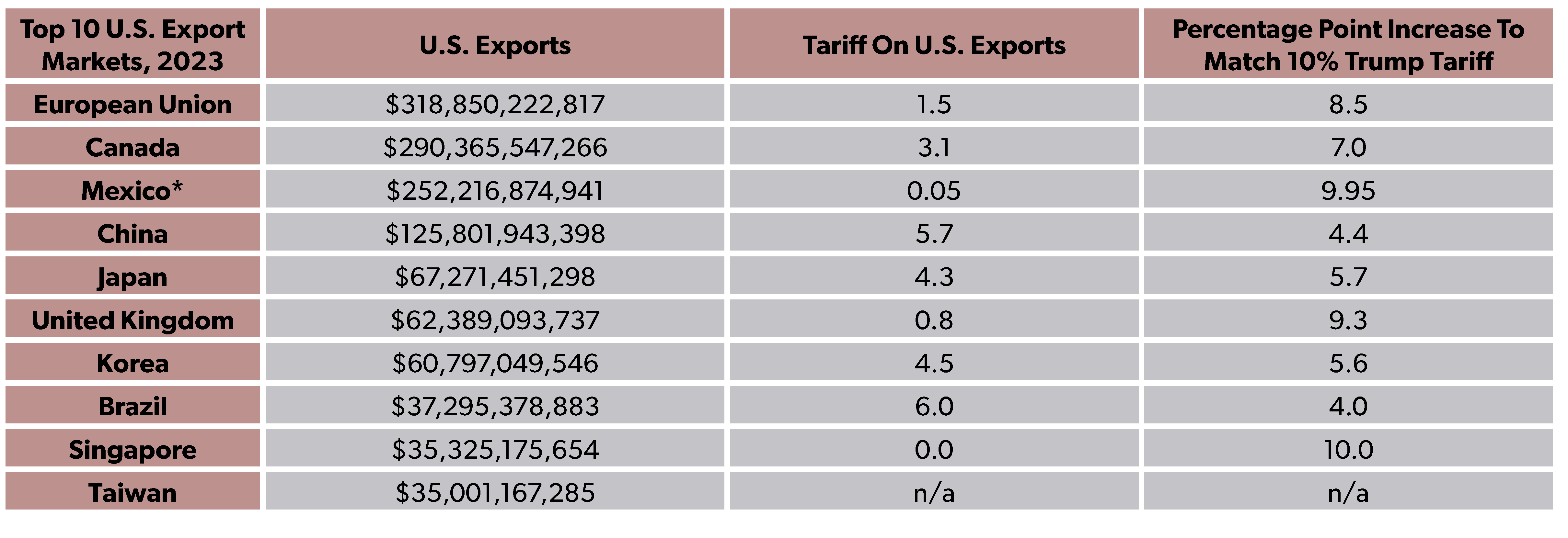
Former President Trump has proposed a 10 percent tariff on all imports to the United States. If he followed through on this threat, he would make the United States a high-tariff country by increasing U.S. tariffs to the highest level since 1943.
As of 2021, the average foreign tariff on U.S. exports was 5.06 percent. If foreign countries retaliated to match the 10 percent U.S. rate, tariffs on U.S. exports would roughly double. Our biggest export markets would need to impose tremendous hikes in tariffs on U.S. exports in order to match the U.S. rate. The largest U.S. export market, the European Union (EU), is already drafting its plan to retaliate. Referring to President Trump’s first term, EU trade commissioner Valdis Dombrovskis promised: “We defended our interests with tariffs and we stand ready to defend our interests again if necessary.”
Figure 1: Largest U.S. Export Markets (2023)

Source: World Integrated Trade Solution, AHS Weighted Average Tariff as of 2021 (*2020 for the EU and 2018 for Mexico), https://wits.worldbank.org/, and U.S. International Trade Commission.
In their review of 2018 tariff hikes and retaliation, economists Mary Amiti, Stephen J. Redding, and David E. Weinstein calculated that a one percentage point increase in foreign tariffs was associated with a 3.9 percent reduction in U.S. exports.
Everything else being equal, if that relationship held with respect to a 4.9 percentage point increase in foreign tariffs on U.S. exports, exports would fall by 19.1 percent. Based on 2023 exports of $2,050.7 trillion, that suggests $391.9 billion in lost exports.
What is the goal of a 10 percent tariff?
There are two unrelated goals that may be driving the proposed 10 percent tariff. President Trump could intend to use the threat of new tariffs as a negotiating tactic to coerce other countries into reducing their tariffs.
It didn’t work out so well for the United States the first time he tried this strategy. Instead of opening markets for exporters, new U.S. tariffs were met with retaliatory tariffs from abroad. In contrast, as the United States negotiated trade deals like the North American Free Trade Agreement and led the creation of the World Trade Organization, foreign tariffs fell from 13.4 percent in 1994 to 5.5 percent in 2009.
Former U.S. Trade Representative Robert Lighthizer has suggested a different reason to impose a 10 percent tariff. He says the tariff would be used as a tool to reduce the trade deficit.
Since higher tariffs would not make a dent in the trade deficit, Lighthizer’s scheme would lead to even higher U.S. tariffs, resulting in additional lost exports as other countries retaliated.
Keep in mind that lost exports would be the least of U.S. worries. The new tariffs would represent a major tax hike for American businesses and families and weaken U.S. security ties while boosting China’s influence in Latin America and elsewhere. Should he regain the White House, President Trump should avoid imposing tariffs that would inevitably boomerang on the U.S. economy.

